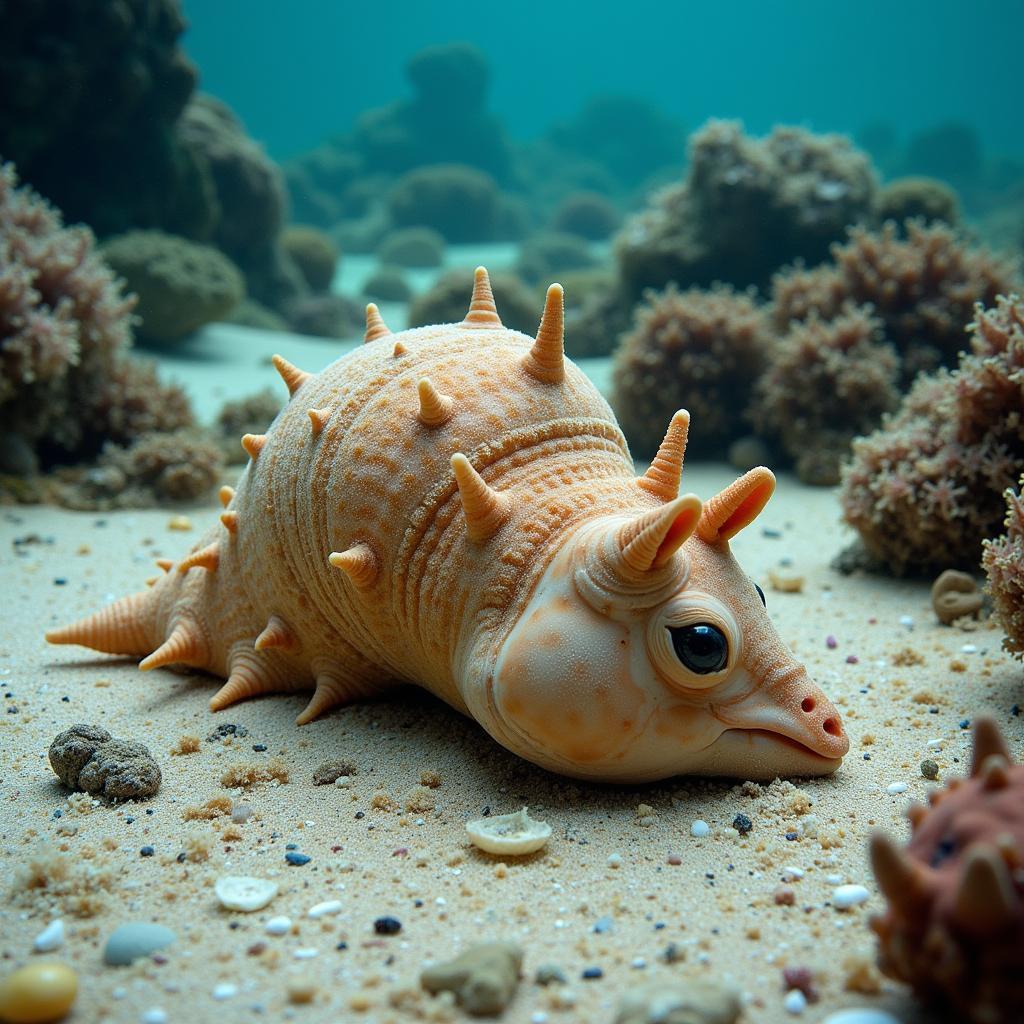Are you fascinated by the world of seashells? Perhaps you’ve heard of the horse conch and the queen conch, two impressive specimens often confused with one another. This article dives deep into the differences between the Horse Conch Vs Queen Conch, exploring their unique characteristics, habitats, and importance.
Distinguishing Features: Horse Conch vs. Queen Conch
While both are large and impressive, the horse conch and queen conch have distinct characteristics that set them apart. The horse conch ( Triplofusus giganteus) is the largest gastropod in the Western Atlantic, boasting an impressive size of up to 24 inches. Its shell is typically orange-brown, often with dark spiral markings. The queen conch (Strombus gigas), on the other hand, is slightly smaller, usually reaching up to 12 inches. It has a beautiful pink lip and a distinctive flared shell, often adorned with spires and knobs.
The most significant difference lies in their feeding habits. Horse conchs are carnivorous, preying on other large mollusks, including the queen conch. They use their powerful foot to smother their prey before consuming them. Queen conchs, however, are herbivores, grazing on algae and seagrass. This dietary difference plays a crucial role in their respective ecosystems.
Habitat and Distribution
Both species inhabit warm, shallow waters, but their geographical distributions differ slightly. The horse conch is found along the Atlantic coast of North America, from North Carolina to Brazil. The queen conch, meanwhile, prefers the Caribbean Sea, the Gulf of Mexico, and the coasts of Florida, Bermuda, and the West Indies.
Within these regions, they occupy distinct microhabitats. Horse conchs prefer sandy or muddy bottoms, where they can burrow partially to ambush their prey. Queen conchs, on the other hand, are commonly found in seagrass beds and coral reefs, where they graze on algae.
 Horse Conch Habitat – Sand and Mud
Horse Conch Habitat – Sand and Mud
Importance and Conservation Status
Both horse conchs and queen conchs play vital roles in their ecosystems. The horse conch, as an apex predator, helps regulate populations of other mollusks. Queen conchs, as herbivores, contribute to the health of seagrass beds and coral reefs by controlling algae growth.
However, both species face threats from human activities. Queen conchs, in particular, are overfished in many areas due to their prized meat and beautiful shells. This has led to population declines and stricter regulations on their harvest. While horse conchs are not as heavily targeted, they are also affected by habitat destruction and pollution.
Why is it important to know the difference between a horse conch and a queen conch?
Understanding the differences between these two species is crucial for conservation efforts. Accurate identification helps researchers monitor populations, assess the impact of human activities, and implement appropriate management strategies. It also prevents the accidental harvesting of protected species.
Are horse conchs dangerous to humans?
While horse conchs are carnivorous predators, they pose no direct threat to humans. They are not venomous and are unlikely to attack unless provoked.
 Queen Conch Grazing Seagrass in Coral Reef
Queen Conch Grazing Seagrass in Coral Reef
“Accurate identification is the cornerstone of effective conservation. Knowing the difference between a horse conch and a queen conch is essential for protecting these magnificent creatures and their delicate ecosystems,” says Dr. Amelia Carter, Marine Biologist at the University of Miami.
Conclusion
The horse conch and queen conch, while seemingly similar at first glance, are distinct species with unique characteristics and ecological roles. By understanding their differences, we can better appreciate their importance and contribute to their conservation. Recognizing the distinct features of the horse conch vs queen conch is a crucial step towards protecting these magnificent creatures for future generations.
FAQ
- What is the largest conch species? The horse conch is the largest gastropod in the Western Atlantic.
- What do queen conchs eat? Queen conchs are herbivores, primarily feeding on algae and seagrass.
- Are queen conchs endangered? Queen conchs are overfished in some areas and are considered commercially threatened.
- What color is a horse conch shell? Horse conch shells are typically orange-brown with dark spiral markings.
- Where are queen conchs found? Queen conchs are found in the Caribbean Sea, the Gulf of Mexico, and the coasts of Florida, Bermuda, and the West Indies.
- Can you eat horse conch? While technically edible, horse conch meat is not commonly consumed due to its tough texture.
- How can I contribute to conch conservation? Supporting sustainable fishing practices and respecting protected areas are vital steps in conch conservation.
“Understanding the delicate balance of marine ecosystems is paramount. By educating ourselves about the creatures that inhabit these environments, like the horse and queen conch, we can empower ourselves to make informed decisions that benefit the planet,” states Dr. James Reynolds, Marine Ecologist at the Scripps Institution of Oceanography.
For more information on horse care and other fascinating pet insights, explore our other articles on Justus Horses USA. We recommend checking out our pieces on “Seashell Collecting Ethics” and “Marine Ecosystem Conservation.”
Need help with your equine or pet-related questions? Contact us! Phone: 0772127271, Email: [email protected] Or visit us: QGM2+WX2, Vị Trung, Vị Thuỷ, Hậu Giang, Việt Nam. We have a 24/7 customer service team.